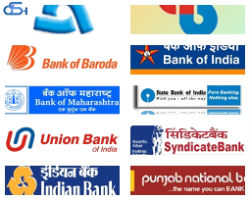Difference between State Bank of India and Nationalised Banks
Establishment under different statutes
The State Bank of India was established under the Stat Bank of India Act, 1955, and the subsidiary banks were established under the State Bank of India (Subsidiary Banks) Act’ 1959. While the nationalized banks were established, as stated above, under the two Acts, i.e., Banking Companies (Acquisition & Transfer of Undertakings) Act, 1970 and the Banking Companies (Acquisition & Transfer of Undertakings) Act, 1980. Thus, the State Bank of India group and the nationalized banks are governed by the different statutes.
Ownership
The State Bank of India is almost wholly owned by the RBI, while the subsidiary banks are almost owned by the SBI. On the other hand nationalized banks are almost wholly owned by the Government of India.
Also, Read: Information on Nationalised Banks
Functions
The State Bank of India besides carrying out its normal banking functions also acts as an agent of the RBI According to the Section 45 of the RBI Act, 1934, “The Reserve Bank shall appoint the State Bank as its sole agent at all places in India where it does not have any office or branch of its banking department and there is a branch of the State Bank or branch of a subsidiary bank . This privilege has not been conferred upon the nationalized banks. However, after the enforcement of the Banks Laws (Amendment) Act, 1983, the RBI can appoint any nationalized bank to act as an agent at all places where it has a branch for the following purposes :
1. Paying, receiving, collecting and remitting money, bullion and securities on behalf of the Government of India and,
2. Undertaking and transacting any other business entrusted by the Reserve Bank from time to time.
Organisational Structure
Organisational Structure
The organizational structure of the State Bank of India is somewhat different from the other nationalized banks. It has a well-defined system of decentralization of authority. The whole country has been divided into nine circles for administrative control purposes The Head Offices of each circle is known as Local Head Office with a Local Board of Directors which has a statutory status. Each circle has been further divided into a number of Regions. There is a Ch ef General Manager (formerly known as the Secretary and Treasurer) for each Circle He is the Ch ef Executive for his circle and has under him Regional Managers for the different regions in his circle.
The Chief General Manager enjoys vast powers for control over branches and has also extensive discretionary powers regarding loans and advances. All this has resulted in taking the operational control nearer to the area of operation. The Bank is further trying to strengthen the Regional Offices so as to reduce the span of control of the controlling authority (i.e., the Chief General Manager), leading to further decentralization.
Don’t Miss:
How many nationalized banks are there in India








